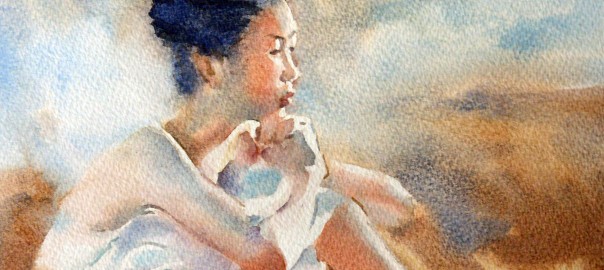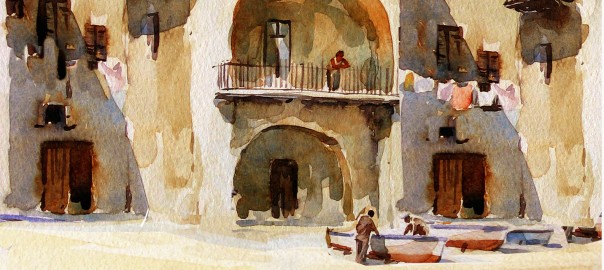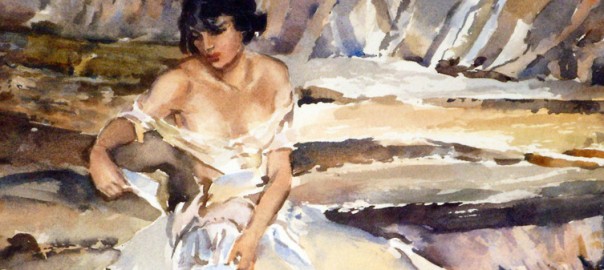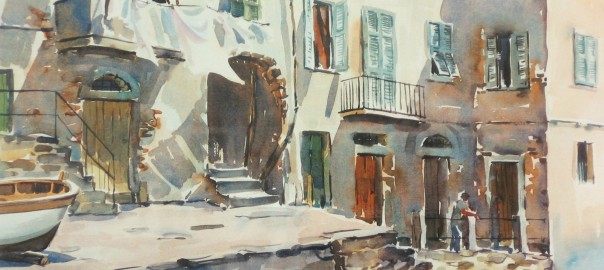It’s not often that I add a new artist to my list of favourites – especially a watercolour artist. But on seeing the work of Chinese artist Liu Yi a few years ago, I felt he had to be included somewhere near the top of that list. His paintings display an exceptional control of the watercolour medium without sacrificing any of its freshness and spontaneity.
Liu Yi was born in Shanghai in 1958. I first came across his watercolour paintings in an article entitled ‘Destiny With Water’ in International Artist magazine (Issue 50, Aug-Sep 2006). The text of that article, in which he describes his watercolour technique, is available on this site. The paintings, a series of watercolours of ballerinas, can be seen on Liu Yi’s own website.



